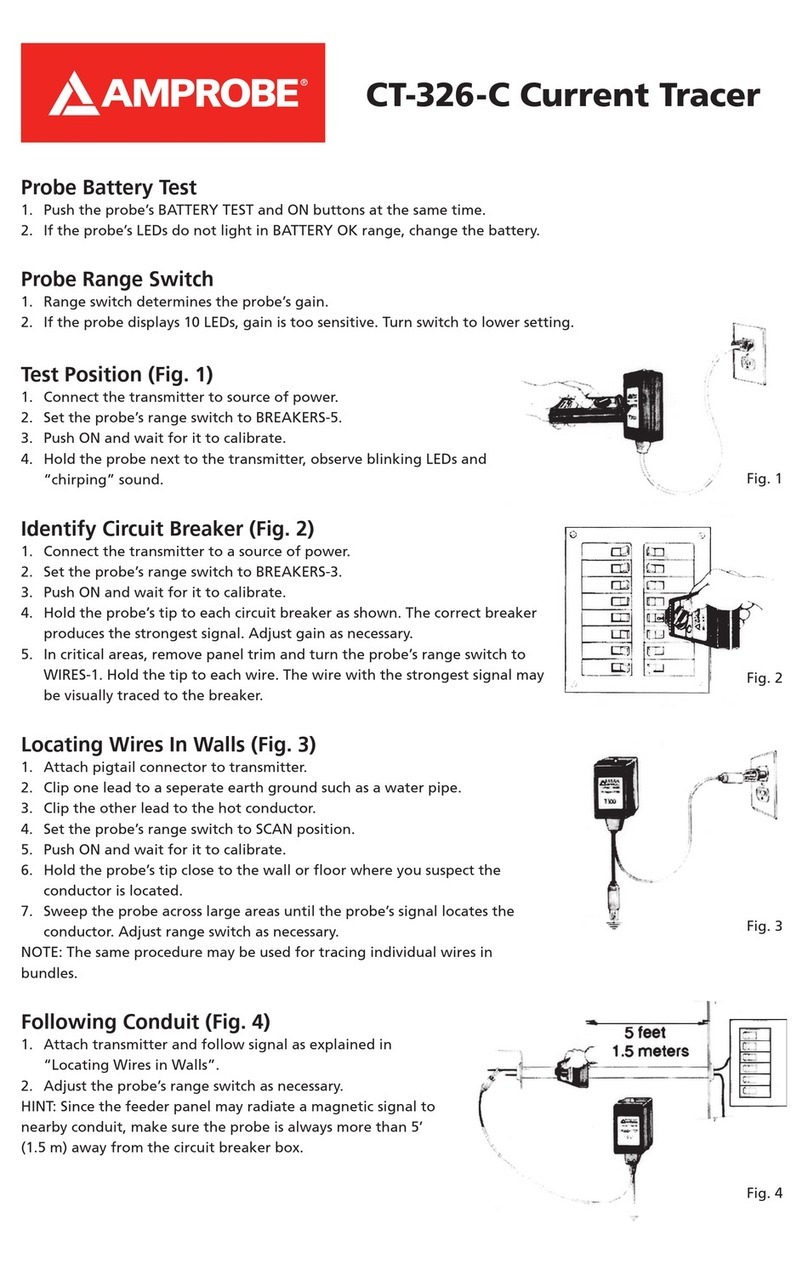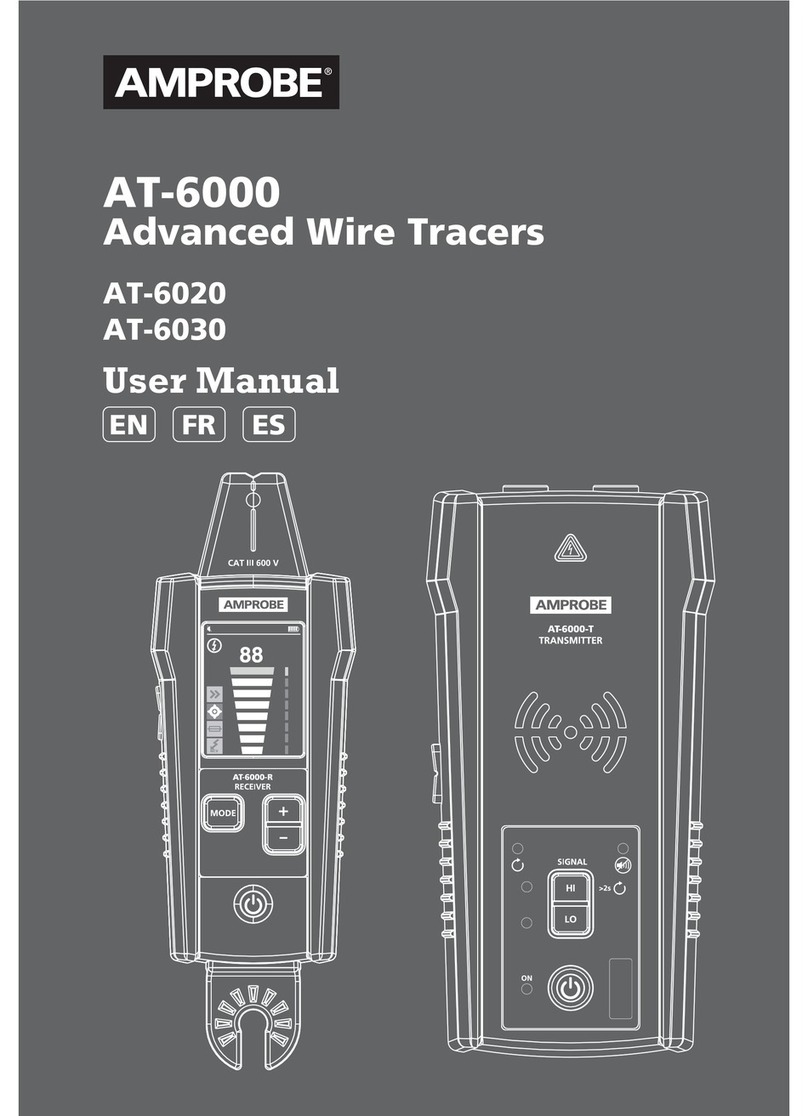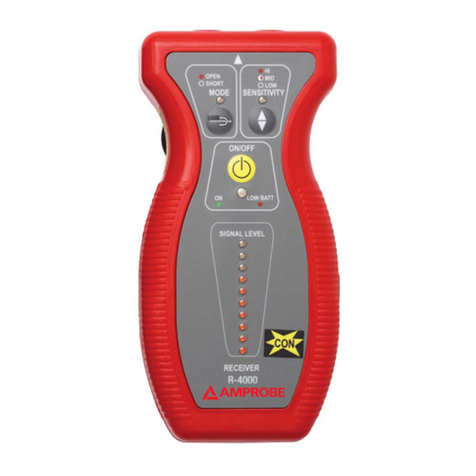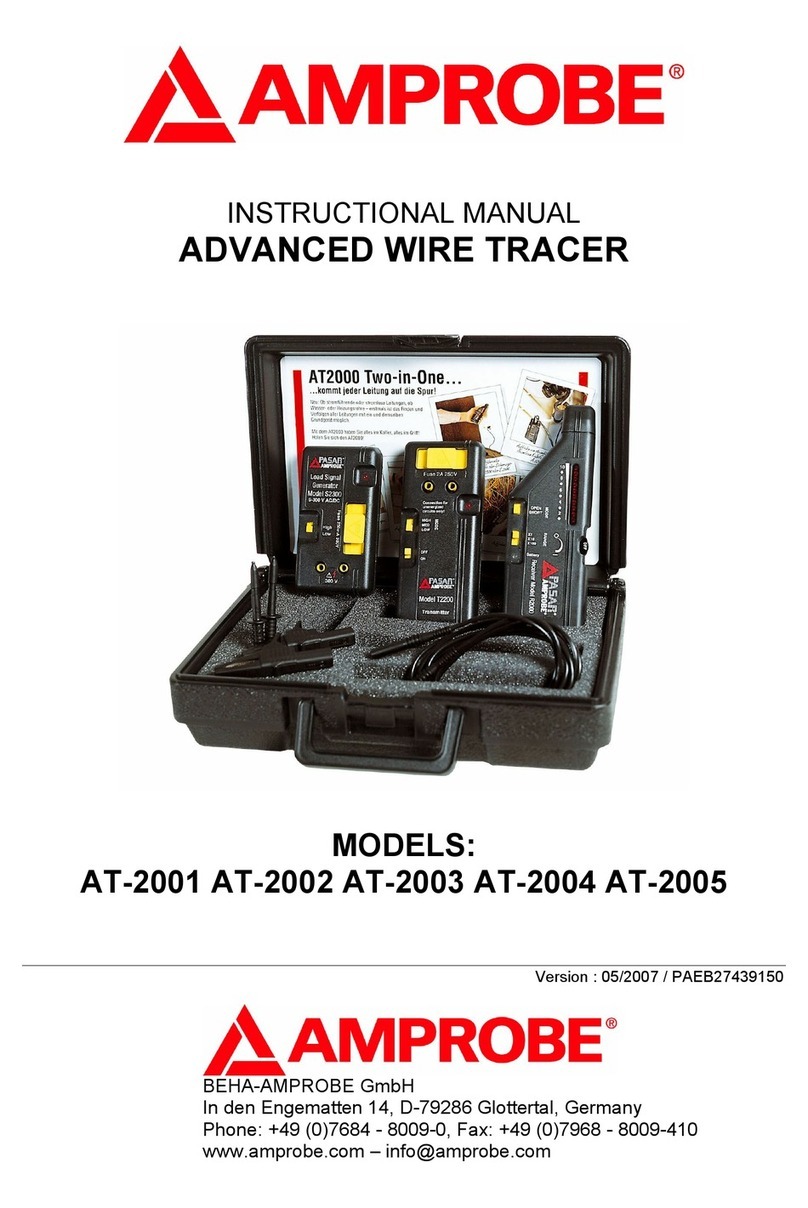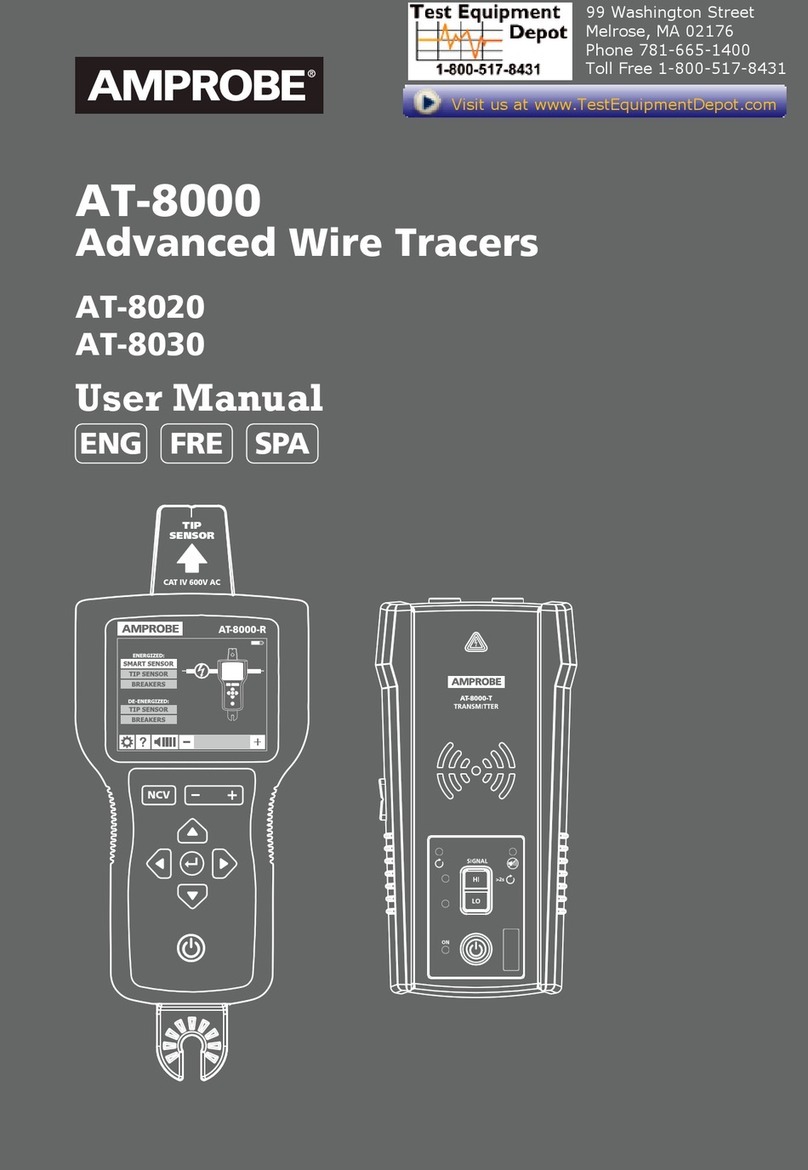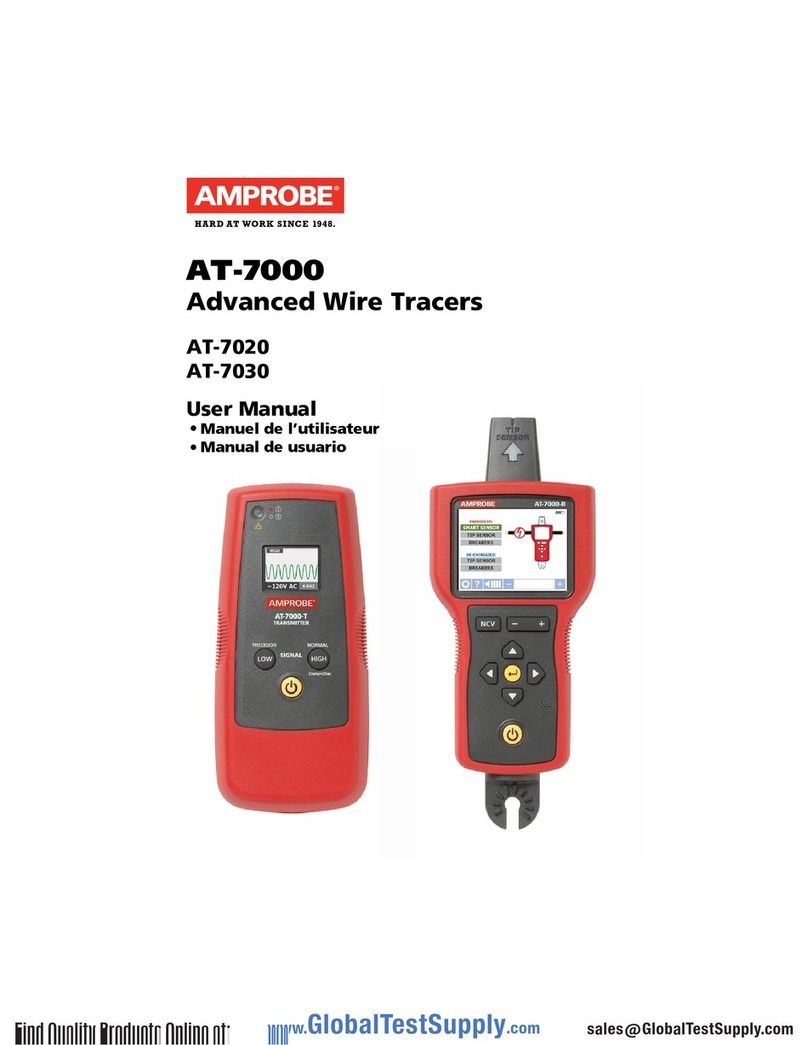
8
Specications
AT-6010-R Receiver AT-6010-T Transmitter CT-400 Signal Clamp
Measurement Category CAT III 600 V CAT III 600 V CAT IV 600 V,
CAT III 1000 V
Operating Voltage 0 to 600 V AC/DC 0 to 600 V AC/DC 0 to 1000 V AC
Operating Frequency Energized: 6.25 kHz
De-Energized: 32.768 kHz
Energized: 6.25 kHz
De-Energized: 32.768 kHz
Wire tracing: 32.768 kHz
AC current measurement: 45 Hz to 400 Hz
Voltage Detection N/A > 30 V AC/DC N/A
Signal Indications Numeric bar graph display and
audible beep LEDs N/A
Response Time
Tip Sensor (Energized /
De-energized): 500 ms
Battery voltage monitoring: 5 sec
Line/phase voltage monitoring: 1 sec
Battery voltage monitoring: 5 sec Instantaneous
Current Output of Signal
(typical) N/A
Energized circuit:
HI mode: 60 mA RMS
De-energized circuit:
HI mode: 130 mA RMS
Loop mode: 160 mA RMS
1 mA/A for AC current measurement with
multimeter
Signal Voltage Output
(nominal) N/A
De-energized circuit:
HIGH: 33 V RMS, 140 Vp-p
With CT-400-EUR:
Loop model: 31 V RMS, 120 Vp-p
De-energized circuit:
2.4 V RMS, 24 Vp-p
Range Detection (open air)
Tip Sensor (Energized):
Max distance via air:
up to 6.1 m (20 ft)
Pinpointing:
approx. 5 cm (1.97 in)
Tip Sensor (De-energized):
Max distance via air:
up to 4.5 m (14.7 ft)
Pinpointing: approx. 5 cm (1.97 in)
N/A N/A
Display size LCD 2.5 in (6.35 cm) LEDs N/A
Display dimensions (W x H) 1.45 x 1.93 in (36.72 x 48.96 mm) N/A N/A
Display type Segment LCD LEDs N/A
Display color Black and white Operating mode LEDs: red
Battery status LEDs: red N/A
Booting time < 3 sec < 2 sec N/A
Backlight Yes N/A N/A
Operating temperature -4 °F to 122 °F (-20 °C to 50 °C) 32 °F to 122 °F (0 °C to 50 °C)
Operating humidity
45%: -4 °F to <50 °F (-20 °C to <10 °C)
95%: 50 °F to <86 °F (10 °C to <30 °C)
75%: 86 °F to <104 °F (30 °C to <40 °C)
45%: 104 °F to 122 °F (40 °C to 50 °C)
95%: 50 °F to <86 °F (10 °C to <30 °C)
75%: 86 °F to <104 °F (30 °C to <40 °C)
45%: 104 °F to <122 °F (40 °C to <50 °C)
Storage temperature and
humidity -4 °F to 158 °F (-20 °C to 70 °C), <95% RH -4 °F to 140 °F(-20 °C to 60 °C), <95% RH
Operating altitude 0 to 6561 ft (2000 m)
Transient protection N/A 6.00 kV (1.2/50 μS surge) N/A
Pollution degree 2
IP rating IP 52 IP 40
Drop test 3.28 ft (1 m)
Power supply 4 x AA (alkaline) 8 x AA (alkaline) N/A
Power consumption (typical) 70 mA
Hi mode: 70 mA
Loop mode with Clamp: 90 mA
Consumption without signal
transmission: 10 mA
N/A
Battery life (typical) Approx. 25 h Hi mode: approx. 25 h
Loop mode: approx. 18 h N/A
Low battery indication Yes Yes N/A
Fuse N/A 1.6 A, 700 V, fast-acting,
Ø 6x32mm N/A
Maximum conductor Size N/A Yes 1.26 in (32 mm)
Dimensions (L x W x H) Approx. 7.2 x 2.95 x 1.69 in
(183 x 75 x 43 mm)
Approx. 7.2 x 3.66 x 1.97 in
(183 x 93 x 50 mm)
Approx. 5.9 x 2.75 x 1.18 in
(150 x 70 x 30 mm)
Weight Approx. 0.6 lb (0.27 kg) Approx. 1.25 lb (0.57 kg) Approx. 0.25 lb (0.114 kg)
Certications
